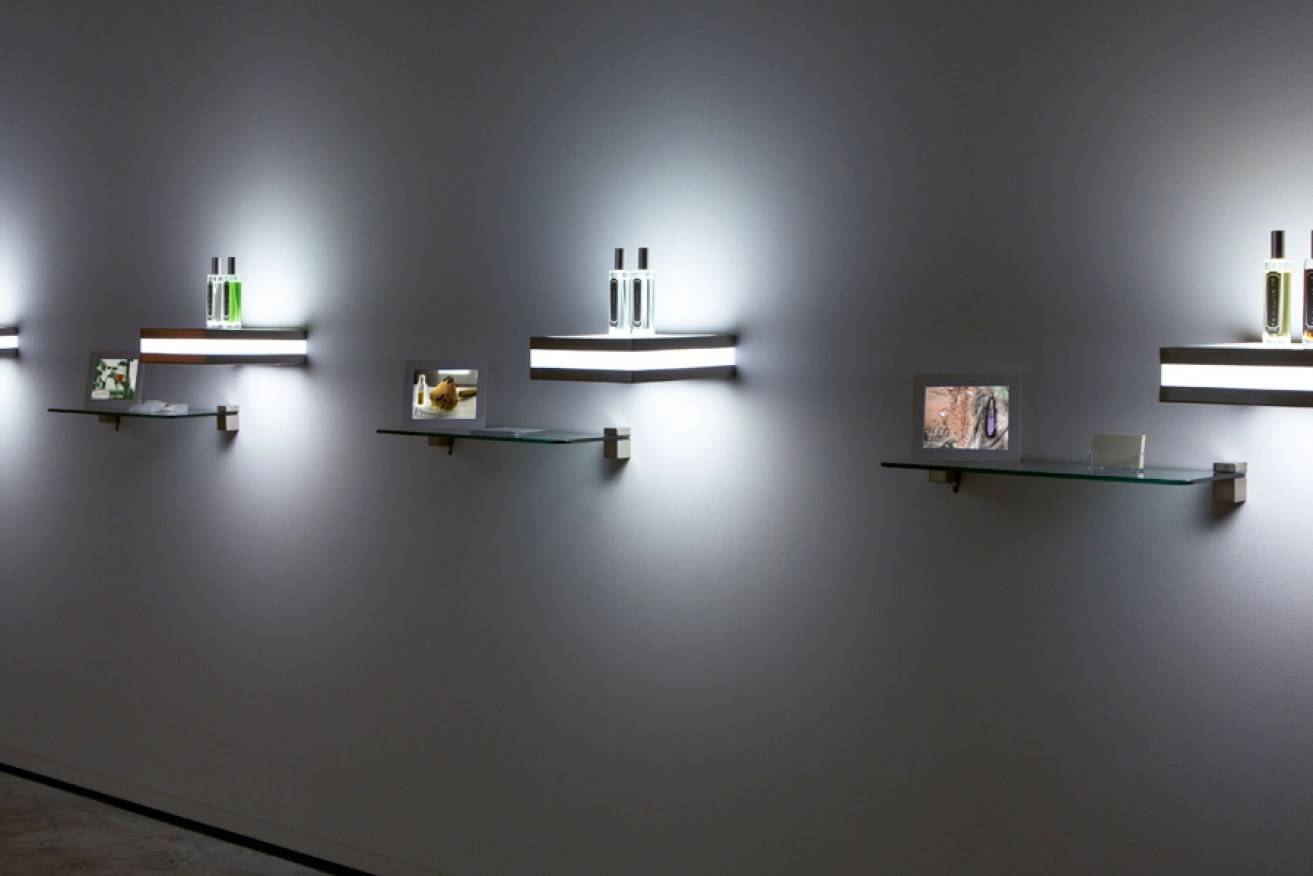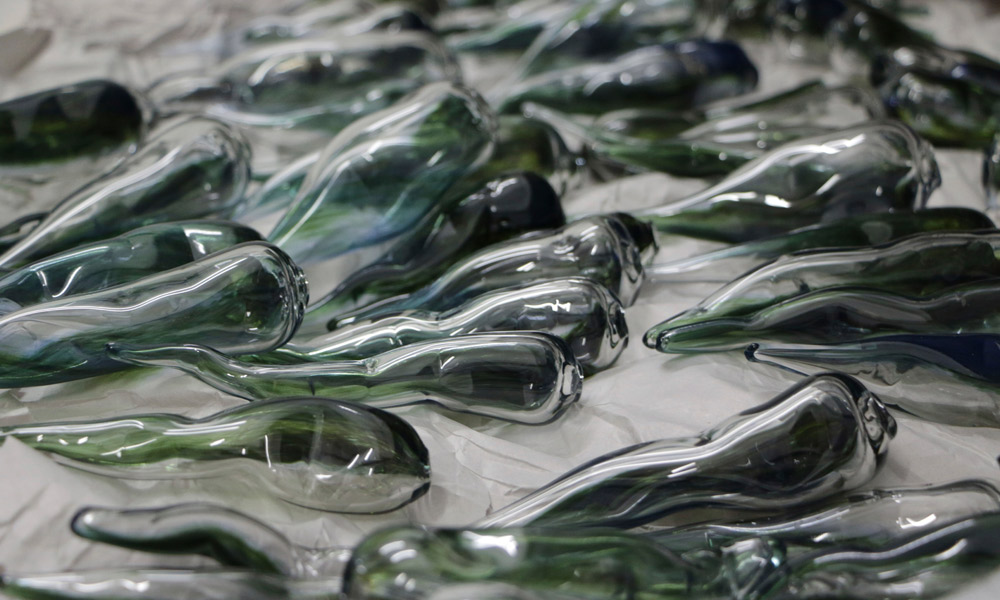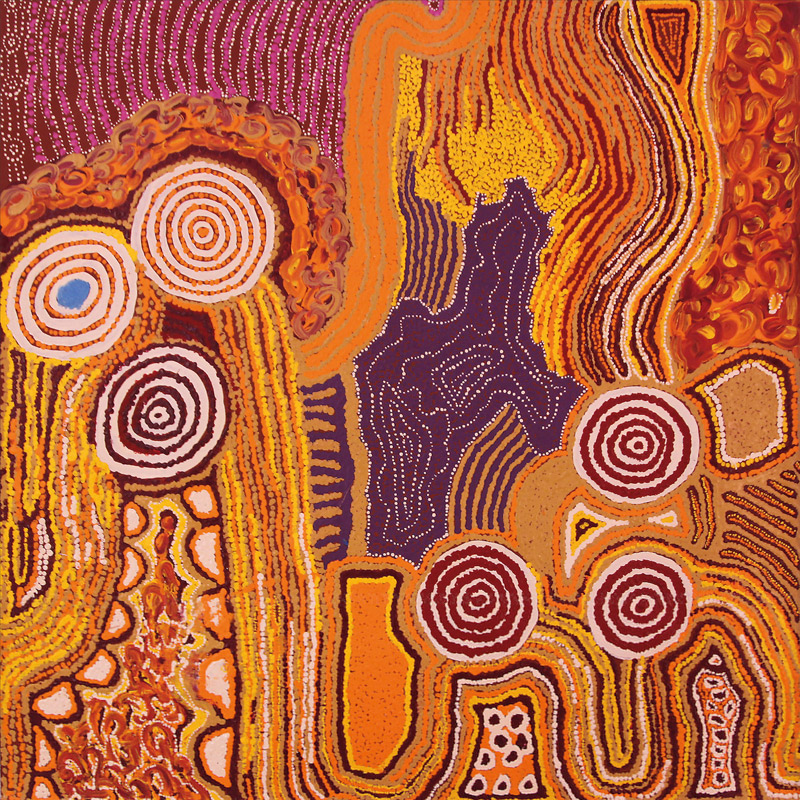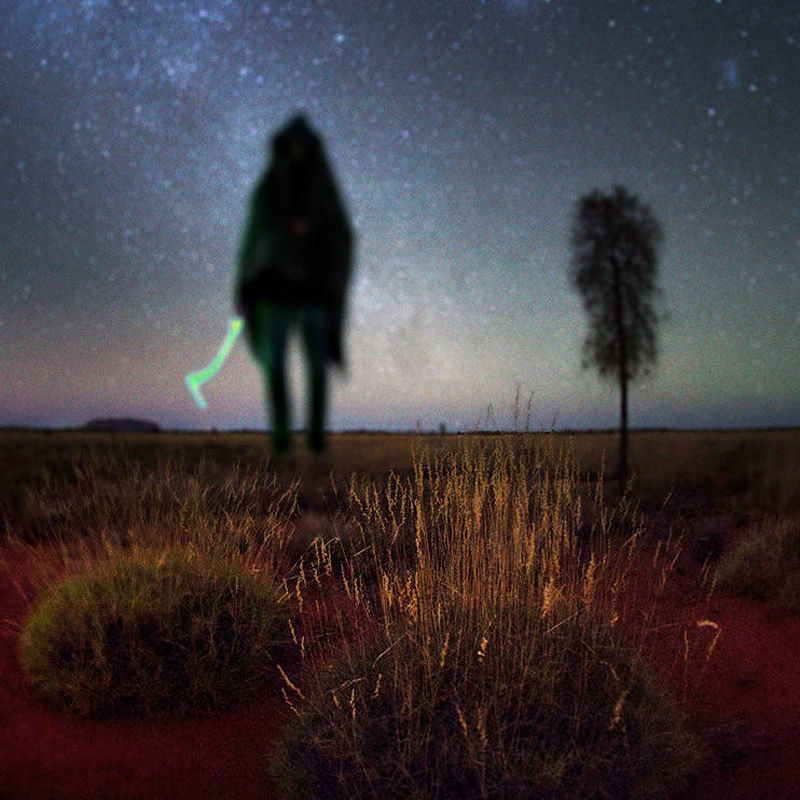Tarnanthi art: from scents to the Jedi

Archie Moore's Les Eaux d’Amoore, 2014 (full caption below).
Artist Archie Moore’s desire to distil the scents of his childhood has resulted in one of the more unusual exhibitions in the Tarnanthi Festival of Contemporary Aboriginal and Torres Strait Islander Art opening in Adelaide next week.
The Queensland-based artist worked with a master perfumer to create a selection of “perfume portraits” which will be displayed in a show titled Les Eaux d’Amoore at the Samstag Museum
“He’s got the perfume bottles and they’re on an illuminated shelf like in a department store, and then there’s the little card that you spray the scent onto,” says Tarnanthi artistic director Nici Cumpston.
“Each scent is really poignant for that person and that memory [to which it relates].”
One of the perfumes, inspired by the artist’s sassy aunts, combines the smells of Brut 33 and rum and can be sprayed on a piece of card cut like a Tallyho paper; another brings together the scents of paper and graphite pencils, remembered from his first day at school in “an inhospitable white-dominated society”.
Moore is one of around 300 artists from across Australia whose work will be displayed during Tarnanthi (pronounced Tar-nan-dee), which will see South Australia’s largest showcase of Indigenous art across 22 venues including the Art Gallery of South Australia, Samstag Museum, The Jam Factory, State Library and Tandanya National Aboriginal Cultural Institute.
Cumpston says Tarnanthi – a Kaurna word meaning “to come forth”, as in the first light of day or a seed sprouting – was seen as a fitting title for the event, which is about providing new opportunities for artists.
“I think it’s really timely,” she says of the festival.
“For Aboriginal and Torres Strait people, it’s very important, because ultimately people just want to be recognised for what they’re doing and for the fact that they are artists, and to be included in the mainstream as well as being recognised within our own culture.
“And it’s just as important if not more important for the mainstream to know who we are and what we’re doing. I think that breaks down all sorts of barriers.”
Cumpston has travelled all over Australia meeting artists and sourcing exhibits.

Yhonnie Scarce, Kokatha/Nukunu people, South Australia, Blown glass yams, 2015, Courtesy the artist. Photo: Anna Fenech Harris
Some of the work in Tarnanthi is inspired by grim chapters in Australia’s history: Yhonnie Scarce’s Thunder Raining Poison comprises more than 2000 blown-glass yams in the shape of the nuclear bomb blasts at Maralinga, while Jason Wing’s Overseer / Officer repurposes old farm equipment in a sculptural and sound installation highlighting the dispossession and oppression of Aboriginal people.
Others, such as Central Australian husband-and-wife artists Dinni Kunoth Kemarre and Josie Kunoth Petyarre’s Bush Footy, are pure fun. Showing at the Art Gallery of SA, it celebrates bush football and comprises carved and painted wooden figures representing their family’s favourite AFL players, as well as colourful paintings of bush football games.
“They all play bush footy and they travel around their community [Utopia] as well as into Alice Springs for matches,” Cumpston says.
“It’s just so joyful … you walk in there and it’s an explosion of football.”
Tarnanthi will showcase the diversity of Aboriginal and Torres Strait Islander art across many different mediums, from painting, weaving, textiles and sculpture, to photography and moving image.
Film director Warwick Thornton (Samson & Delilah) has created a new short film which has its origins in the Star War movies he saw at the drive-in cinema in Alice Springs as a young boy. The Way of the Ngangkari references the power of the Jedi in its celebration of the importance of the Ngangkari (traditional healers).
Another artist, Douglas Watkin, originally from Torres Strait Islands, will present a graphic-novel-style animation titled The Queen and I, which illustrates how at the age of just 19 his father ended up driving in the cavalcade for the Queen’s visit to Cairns in 1954. Unfortunately, he stalled the car when he spotted his childhood crush – later to become his wife – in the crowd.
“Then there’s the women that got stuck out bush for five days,” Cumpston says of Kapi Ungkupayi / He Gave Us Water, an immersive installation at UniSA’s SASA Gallery.
“It was really hot, it was January, and they had a very old lady with them so they were very worried.
“It [the installation] is the story of how they survived for those days. A bird and a little white cloud led them to where to dig for water … and they ate goannas. It’s a fascinating story.”
The installation created by the women, from Minyma Kutjara Arts Project in remote Western Australia, includes an animation in which they have re-created the events using a woven vehicle and characters.

Roma Peterman Butler, Pitjantjatjara people, Western Australia, Kapi ungkupayi, 2013, synthetic polymer paint on canvas. Courtesy the artist and Minyma Kutjara Arts Project.
Around 150 artists from around Australia will be in Adelaide during Tarnanthi, and members of the public will have the opportunity to meet some of them at the Tarnanthi Art Fair at Tandanya next weekend (October 9-10).
Cumpston says the Art Fair will offer an introduction to the festival. It will feature stalls from more than 40 art centres, as well as workshops with the Tjanpi Desert Weavers and a curated exhibition, with all works for sale.
“I think once people even just come to the Art Fair they are going to see the difference there is across the country,” Cumpston says. “We have people with all sorts of different influences and backgrounds.
“It’s an opportunity to meet people and get to know who people are within the community. It isn’t always easy to get in [to remote communities], and also I don’t think we’ve really had the chance in South Australia to embrace our own artists from across the state, let alone bringing artists from interstate here on this sort of scale.”
Tarnanthi will run from October 8 to 18, but includes some exhibitions continuing through until January 17 next year.
Other exhibitions running as part of the festival include:
Spinifex Arts Project: The Spinifex people were temporarily relocated to Western Australia during the nuclear testing at Maralinga, and their paintings of their homelands were later used during the Native Title documentation process. Thirteen new works, painted in and around Tjuntjuntjara during a trip on which the artists were accompanied by anthropologist John Carty, will be on show at the Art Gallery of SA during Tarnanthi.
Nganmarra – The Container of Life: Showing at the Museum of Economic Botany in the Botanic Gardens, this exhibition features woven conical mats by senior women artists from Bula’bula Arts in Ramingining, north-east Arnhem Land.
Kulata Tjuta Project: An installation featuring carved spears made by men from seven communities in South Australia’s APY Lands. Dedicated to those fighting the closure of remote communities, it will be in the grounds of Government House on October 9, and will be accompanied by live performances.
Our Mob: An annual exhibition of work by South Australian Indigenous artists at the Adelaide Festival Centre, Our Mob will this year be part of Tarnanthi. It will include works in a range of mediums, including photography, weaving, painting and sculpture, exploring themes such as relationship to land, wildlife, politics and Aboriginal cultures.
Tarnanthi Textiles: A selling exhibition which will open at Tandanya following the Art Fair and continue until December, showcasing the diversity of styles of Aboriginal and Torres Strait Islander textile work.
Desart Photography Prize: A curated selection of photographs from Aboriginal art workers which have featured in the Desart Photography Prize over the past four years will be on display at the State Library of SA until November 1.
Riverland: Yvonne Koolmatrie: A comprehensive exhibition of work created by the Ngarrindjeri artist over her 30-year career is on show at the Art Gallery of SA. Koolmatrie creates woven forms using hand-harvested river sedge from the banks of the Murray.
Details of all exhibitions can be found here.
Full caption for main image: Archie Moore, Kamilaroi people, New South Wales, Les eaux d’Amoore, 2014, eleven custom made perfume compounds in glass bottles, light boxes, shelves, jpgs on digital displays, assorted testing cards. Courtesy Archie Moore and The Commercial, Sydney. photo: Jessica Maurer





